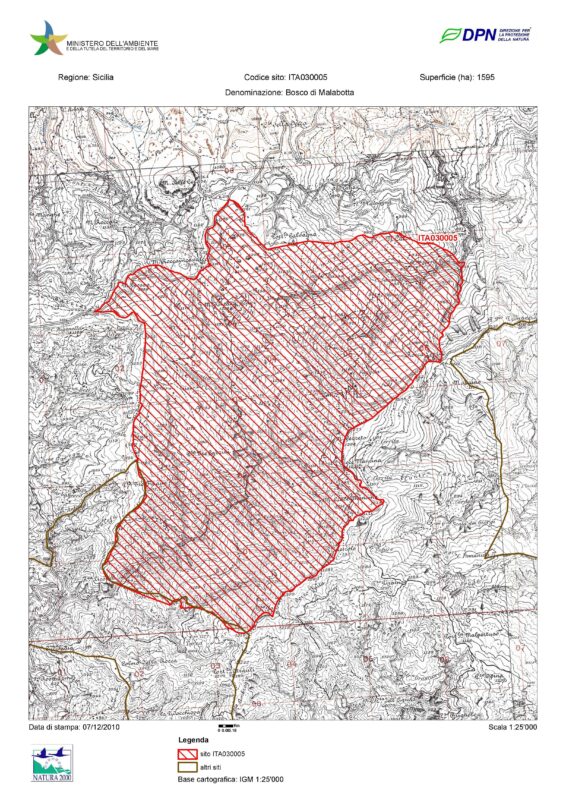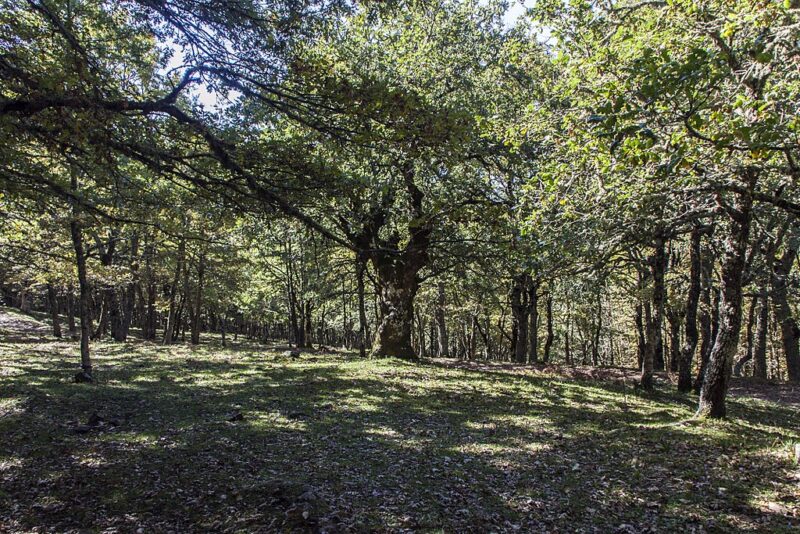Wood of Malabotta (ITA030005)
Site type: SAC Special Conservation Area
Code: ITA030005- Hectares: 1595
Description:
This site concerns a mountainous area of the Peloritani chain at altitudes between 1100 and 1300 m, consisting essentially of metamorphic rocks such as schists and gneisses. The bioclimate is of the lower humid supramediterranean type. The presence of extensive depressed beech woods linked to conditions is significant here rather humid microclimates due to the presence of a fog regime. These are extrazonal beech woods that develop in valley environments within the belt affected by cerrete that occupy the most open and least inclined stations in this area. In addition to these wooded formations, numerous aspects of degradation including mesophilic bushes dominated by thorny shrubs and mesophilic pastures of Plantaginion cupani.
In this site, of particular naturalistic and landscape interest are the extrazonal beech woods, as well as the Turkey oak woods, which represent the only examples currently existing on the Peloritani chain. Overall, it is still well preserved and floristically rich woods. There are also several entities that in the regional area are rare or considered to be of significant phytogeographic interest, in turn mentioned in the list in section 3.3 (D). richness of the fauna is very high both as regards the wild Vertebrates which include numerous species at risk of extinction in our island among the which deserve to be mentioned the wild cat, the marten and many large birds of prey, and especially in the context of the invertebrate fauna which is represented by numerous species pushed southwards by the last glaciations, for which the site represents one of the last refuges on our island. The populations of these species, being the southernmost of their distribution range, are often characterized by a significant diversity compared to European populations genetics, which is of great interest for studies on biological evolution. In some cases we are in the presence of neo-endemic species differentiated by isolation from the primitive European "mother" species. The presence of valleys, woods, streams, etc. in conditions of high naturalness, it also guarantees the persistence of a contingent of more ancient species (paleo-Tyrrhenian and paleo-Mediterranean), which represent a sort of historical memory of the faunas existing in Sicily in prequaternary eras.

Source: Ministry of the Environment Natura 2000 form
Ministerial data: Natura 2000 form
Card insertion: Ignazio Caloggero
Photo: web
Information contributions: Ignazio Caloggero, Region of Sicily



